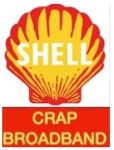
Shell says it recovers 95% spilled oil in Bayelsa, Delta communities
Shell Petroleum Development Company of Nigeria Limited (SPDC)… acknowledged the spills and expressed regret over the incidents.
Shell Petroleum Development Company of Nigeria Limited (SPDC) says it has recovered more than 95 per cent of spilled oil from the recent incidents in Bayelsa and Delta states.
SPDC Media Relations Manager, Bamidele Odugbesan, made this known in a statement he issued on Sunday in Port Harcourt.
Mr Odugbesan said that recoveries were made on sections of the Trans Ramos Pipeline (TRP) in Aghoro community, Bayelsa and Odimodi community, Delta.
He said that the pipeline, which remained shut-in since the incidents, supplied crude to the SPDC Joint Venture-owned Forcados Oil Terminal in western Niger Delta for export.
He said SPDC acknowledged the spills and expressed regret over the incidents.
This website and sisters royaldutchshellgroup.com, shellnazihistory.com, royaldutchshell.website, johndonovan.website, and shellnews.net, are owned by John Donovan. There is also a Wikipedia segment. EBOOK TITLE: “SIR HENRI DETERDING AND THE NAZI HISTORY OF ROYAL DUTCH SHELL” – AVAILABLE ON AMAZON
EBOOK TITLE: “SIR HENRI DETERDING AND THE NAZI HISTORY OF ROYAL DUTCH SHELL” – AVAILABLE ON AMAZON EBOOK TITLE: “JOHN DONOVAN, SHELL’S NIGHTMARE: MY EPIC FEUD WITH THE UNSCRUPULOUS OIL GIANT ROYAL DUTCH SHELL” – AVAILABLE ON AMAZON.
EBOOK TITLE: “JOHN DONOVAN, SHELL’S NIGHTMARE: MY EPIC FEUD WITH THE UNSCRUPULOUS OIL GIANT ROYAL DUTCH SHELL” – AVAILABLE ON AMAZON. EBOOK TITLE: “TOXIC FACTS ABOUT SHELL REMOVED FROM WIKIPEDIA: HOW SHELL BECAME THE MOST HATED BRAND IN THE WORLD” – AVAILABLE ON AMAZON.
EBOOK TITLE: “TOXIC FACTS ABOUT SHELL REMOVED FROM WIKIPEDIA: HOW SHELL BECAME THE MOST HATED BRAND IN THE WORLD” – AVAILABLE ON AMAZON.






















Shell Nigeria recovers 95% spilled oil (Aug 20, 2018)
My colleague Darry MacMahon wrote – Pardon my skepticism, but how would they know? I’m making some assumptions here, based on typical oil industry and pipeline operation practice.
If you come up with a ratio number, like 95%, you need two underlying numbers: the amount recovered and the amount actually spilled.
The people doing the clean-up might have a reasonable number on how much they picked up. That number will likely be a little inflated, as they will also likely have picked up some water and small debris as part of the clean-up. Big vacuum units are not good at discriminating between oil and other things in and around the oil. So, the numerator is likely overstated.
However, Shell likely has no accurate way to assess the amount that was actually spilled. Pipeline operators don’t put volume meters at frequent points along the line. In North America, some major pipelines have no metering on volume at all. (They do tend to have pressure meters, though as proven at Kalamazoo, they don’t know how to interpret the information they provide.)
So, is the denominator based on an actual measure – how much oil was actually in the pipe? Or how big the holes were and taking a guess at the flow rates when discovered? (which would lower than the original flow rates at higher pressure) Or just having a look around and saying, oh, looks like about 5% wasn’t picked up? (which would not count any oil which actually soaked into the ground or carried away by rains or rivulets and creeks. In short, for a number of reasons, the numerator is likely to be undercounted.
But 95% sure sounds good in a headline. It’s a number the oil industry has used on multiple occasions before, when it was clearly spurious.
This would be wonderful news, if this was actually true.
Please might there be any photographic records of spilled crude oil recovery work on any sections of the Trans Ramos Pipeline (TRP) in Aghoro community, Bayelsa and Odimodi community, Delta?
We’d love to know how they achieved 95% spilled oil recovery.
Also were there any measures to address the 5% not recovered? For example using non-toxic Bio-Remediants like OSEII which is available from Lesi Maol of Giolee Global Resources in Port Harcourt – https://www.giolee.com/
Gobsmacked, anyone? – Chris
Big oil asks government to protect it from climate change
By: WILL WEISSERT, Associated Press
Updated: Aug 22, 2018 11:50 AM CDT
https://www.cbs42.com/news/us-and-world/big-oil-asks-government-to-protect-it-from-climate-change/1388352229